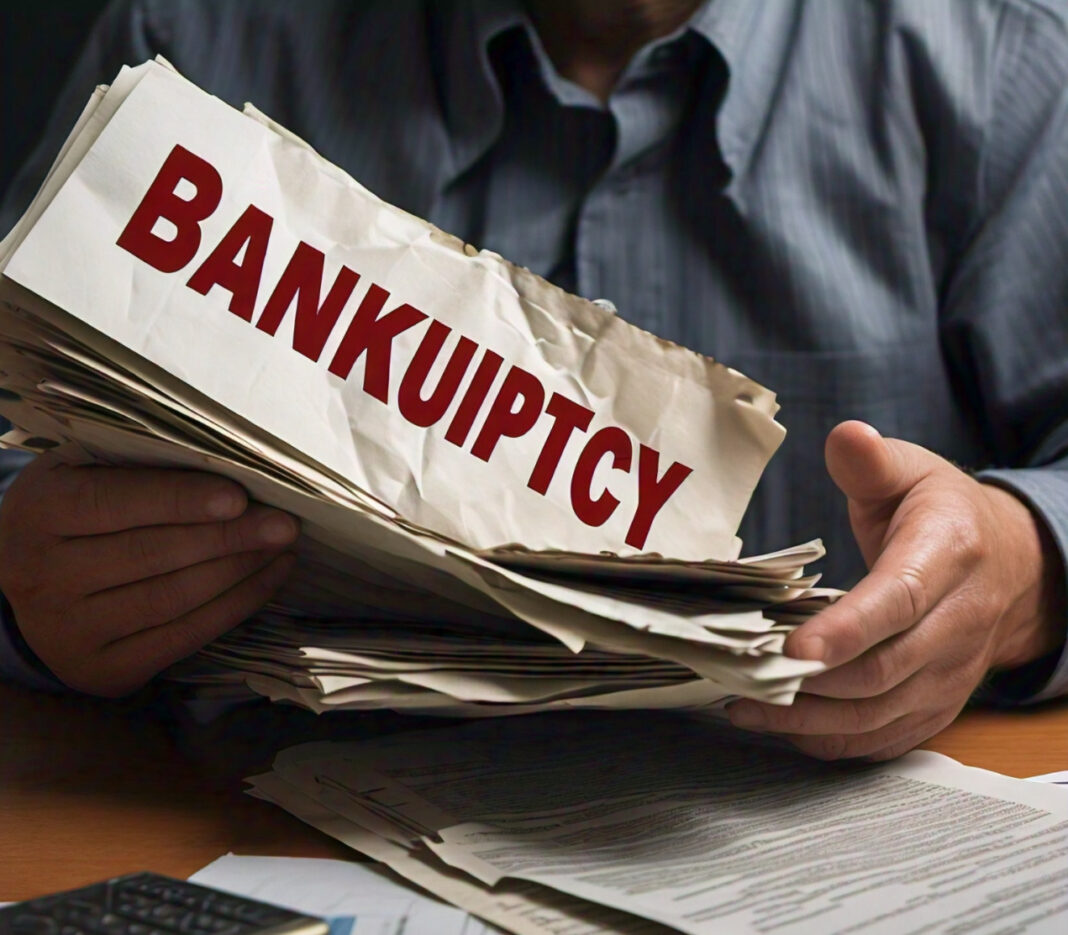Bankruptcy may seem to be the end of the financial world, but it is actually a beginning. Yes, bankruptcy can seriously affect one’s credit score, but that is not to say that it condemns one to a life of poor credit. With patience, dedication, and the right strategies in place, you can rebuild your credit and regain financial stability once again how this detailed guide will help in rebuilding after bankruptcy-from pragmatic steps to insights that will be helpful in the journey of financial recovery.
Understanding Bankruptcy and Its Impact on Credit
Types of Bankruptcy
Before engaging in the rebuilding process, it is important to know the different kinds of bankruptcy and their implications on your credit:
- Chapter 7 Bankruptcy: Also known as “liquidation bankruptcy,” this type eliminates most unsecured debts. It continues to appear on your credit report for 10 years from the filing date.
- Chapter 13 Bankruptcy: This is a “reorganization” bankruptcy in which you pay back all or part of your debts over 3-5 years. It remains on your credit report for 7 years from the date filed.
The Immediate Impact on Your Credit Score
Bankruptcy can drop your credit score as low as the following:
- For good credit individuals pre-filing, scores drop by 200 points or more.
- Individuals who already had poor credit pre-filing would likely not see a decrease as severe.
Effects Long Term
Though harsh in the immediate future, bankruptcy’s effect on credit wears off with time:
This can even raise your credit score before the bankruptcy falls off your report. Most lenders consider a bankruptcy being several years old as less negative than a recent bankruptcy.
Recovery: First Steps After Bankruptcy
Step 1: Obtain Credit Reports
To begin with, you should obtain copies of your credit reports from all three major credit bureaus, namely Equifax, Experian, and TransUnion.
Why This Matters:
- Ensures that all the debts included in the bankruptcy are correctly reported as discharged.
- Assists you in noting any errors you should dispute.
- Gives you a baseline to track your progress.
Step 2: Review and Dispute Any Errors
Go through each of your credit reports carefully and look for inaccuracies.
Common Errors to Look For:
- Discharged debts still appear active or past due
- Incorrect personal information
Accounts not your own
How to Dispute:
- Write a letter to the credit bureau citing the error.
- Attach supporting documentation.
- Send it via certified mail with the return receipt requested.
Step 3: Make a Budget
A good budget will help you stay out of future financial problems and prove to others that you can handle money responsibly.
What to Include in a Post-Bankruptcy Budget:
- All income from all sources
- All expenses, necessary and discretionary
- Save money for savings and emergencies
- Set money aside to pay off debt, if any
Step 4: Create an Emergency Fund
An emergency fund may prevent future financial crises from occurring.
How to Create an Emergency Fund:
- Start small – even $5 or $10 per week starts to build over time
- Set up automatic transfers to a savings account
- Work towards eventually saving 3-6 months of living expenses
How You Can Rebuild Your Credit
Secured Credit Cards-A Handful of Tool
Secured credit cards can be a great way to start rebuilding credit right after bankruptcy.
How Secured Credit Cards Work:
You deposit cash, which typically then becomes your credit limit
The deposit reduces the risk for the card issuer
You use the card like a regular credit card, with purchases and payments
How to handle Secured Cards
- Make small, regular purchases
- Make complete payments every month
- Keep credit utilization below 30%
- The card company must report to all three major bureaus
Become an Authorized User
You can also rebuild your credit as an authorized user on your family member’s or close friend’s credit card if they allow it.
Benefits:
- Their positive payment history can also appear on your credit report
You get a good credit benefit without legal liability for the debt.
Things to Keep in Mind:
- Primary cardholder needs to have an excellent credit history
- The card issuer has to report authorized user activity to credit bureaus
Credit-Builder Loans: A Low-Risk Option
Credit-builder loans are designed especially for people who want to build or rebuild credit.
How They Work:
- You get approved for a small loan amount
- Money is kept in a savings account
- You pay a regular monthly instalment to “repay” the loan
- You receive cash once it is fully paid
#### Benefits:
- Helps to build a good payment history
- Trains to budget for regular instalments
- Cash upon completion
### Retail Store Cards: Proceed with Caution
Retail store credit cards are sometimes easier to get approved for right after bankruptcy, but they can be rather perilous.
#### Pros: - Easier to get approved
- Able to provide store discounts and rewards
Cons:
- Normally carry high interest rates
- May encourage overspending
Using Wisely:
- Utilize only for small, planned purchases
- Pay the balance in full each month
Rebuilding Habits: Keys to Long-Term Success
Punctual Payments: Laying the Base for Good Credit
The secret to rebuilding your credit lies in making regular and timely payments.
Ways of Ensuring Timely Payments:
- Set up automatic payments for fixed bills
- Place variable expenses on calendar reminders
- Pay more than the minimum whenever possible
- If you feel that you are going to have trouble in making payments, immediately contact your creditors
Keep Credit Utilization Low
Credit utilization is a comparison of how much credit you are using as compared to your credit limits. It is a highly influential factor in your credit score.
Managing Credit Utilization
- Keep utilization below 30 per cent on each card and overall
- Consider multiple payments throughout the month
- Request credit limit increases as your credit improves
Diversify Your Credit Mix Over Time
Over time in rebuilding your credit, you should try to have different types of credit mixes.
Types of Credit:
- Revolving credit (credit cards)
- Installment loans (personal loans, auto loans)
- Mortgages (in the future)
Why It Matters:
- It shows you are capable of using and managing many kinds of credit responsibly
- Can have a positive effect on your credit score
Be Patient and Persistent
It takes time to rebuild credit after a bankruptcy. To do this, it’s crucial that you:
- Set realistic expectations
- Celebrate small successes
- Stay dedicated to your financial goals
- Remember, sometimes progress may be slow, but sure
Monitoring Your Progress
Regularly Check Your Credit Reports and Scores
Monitoring your credit is an essential part of the rebuilding process.
Benefits of Regular Monitoring:
Catch and dispute errors quickly
Detect possible fraud or identity theft
Know what affects your credit score
Monitor your progress over time
Monitoring Tools:
Free credit monitoring services
Paid credit monitoring with additional features
Free annual credit reports at AnnualCreditReport.com
Set Credit Score Goals
Having a tangible goal in mind will help you stay motivated.
Sample Goals
Reach a credit score of 600 within one year
- Qualify for an unsecured credit card in two years
- Reach a “good” credit score of 670+ in three years
Rebuilding Credit without Falling into a Trap
Watch Out for Credit Repair Scams
As you crawl your way to rebuild your credit, beware of companies promising quick fixes.
Red Flags:
- Guaranteed removal of negative information
- Requires an upfront payment
- Suggests creating a new credit identity
Keep in mind that if it sounds too good to be true, most probably, it is.
Don’t Apply for New Credit in a Rush
Though one needs to start rebuilding credit, applying for too much credit in a rush is counterproductive.
Why It’s Risky:
- Multiple hard inquiries lower your credit score
- New accounts lower the average age of your accounts
- You may get tempted to take on more debt than what you actually can handle
A Better Approach:
- Focus on only one or two credit-building tools to get started
Do not apply for credit more often than every six months. Apply only for credit that you truly need and that you can handle responsibly.
Do Not Close Old Accounts
If you have any credit accounts open at the time of bankruptcy, do not close them.
Reasons to Keep Old Accounts Open:
Longer credit history
Potential to help credit utilization ratio
Base upon which to rebuild credit
Don’t Neglect Non-Credit Bills
Keep in mind that a few bills aren’t traditionally reported to credit bureaus but can still impact your credit if they remain unpaid.
Examples Include:
- Utility bills
- Cell phone bills
- Rent payments
Tip:
Be aware that using a rent payment service that reports the renter’s payments to the bureaus could help you start building a credit profile.
The Future: Life After Rebuilding
How Long Does It Take Before You Start to See Improvement?
The building-up process of credit after bankruptcy takes time, but you can see the fruits rather sooner:
In 12-18 months, if you have been consistently following good credit practices, you should start to see noticeable improvements.
-2-3 years: Many people start to see significant improvements; it may be enough to qualify them for better credit products.
-7-10 years: The bankruptcy falls off your credit report; this can result in substantial score increases.
Major Purchase Planning
As your credit grows, you might be thinking about making major purchases such as a car or home.
Preparing:
- Save for a larger down payment to offset credit concerns
- Research lenders who work with post-bankruptcy borrowers
- Be prepared to explain your bankruptcy and subsequent financial responsibility
- Consider working with a credit counsellor or financial advisor
Maintaining Your Rebuilt Credit
Once you have started rebuilding your credit, you will want to maintain it.
Long-Term Strategies:
- Continue good credit practices
- Periodically obtain copies of your credit reports
- Adapt your credit strategy to improve your score
- Keep up to date with changes to credit scoring models and financial products
- Consider credit monitoring services for ongoing protection
Conclusion
Rebuilding credit after bankruptcy is a difficult process, but millions of people have been able to navigate it and come out the other side. Understanding how bankruptcy has affected your credit, along with a number of proactive steps you can take to rebuild, will get you on the path to financial stability and even prosperity.
Key points to remember:
- Lay down a good foundation: check your credit reports and develop a budget
- Smart use of credit-building tools: secured cards, credit-builder loans, and authorized user status.
- Patience and being methodical, as improvement takes time.
- Tracking your score frequently.
- Keeping off common pitfalls and scams.
- Looking ahead and taking the next step in planning a financial life.
Bankruptcy could be your chance to make a new beginning with a set of new, much better financial skills and a brighter financial future if you make the necessary commitment and apply the proper strategies. Keep in mind that every step forward is progress, no matter how small it may be. Stay committed; celebrate your victories along the way. And when you need help, don’t let pride get in the way. Your journey to rebuilt credit and financial stability starts today.






